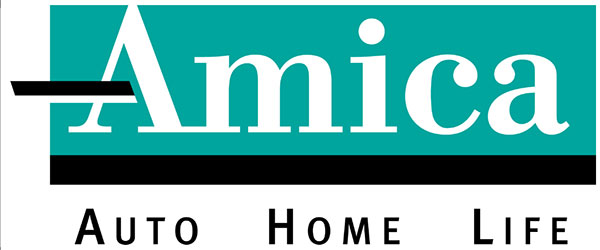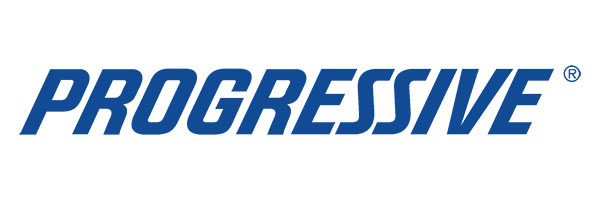Car insurance shopping can be a pain. In truth, any kind of insurance shopping is a pain. But we digress. For most of us, we like to get this out of the way as soon as possible. Getting the cheapest rate that offers the minimum liability coverage required by our state. However, doing this runs the risk of being underinsured. It only takes one bad accident to make you fully appreciate how much coverage you got. And statistically speaking, you’re going to be in one every 18 years. After hearing such enlightening news, you’re probably now wondering how you’ll find the best rates. Well, if you have the time, make sure to read our guide below. But for those who want to skip the nitty-gritty, we’ve compiled a list of the best auto insurance companies based on their customer service, rates, discounts, and claims handling.
*Please note that while we do everything in our power to provide accurate information with recommendations that we came up with during or research, this article does not constitute financial advice. As of now we do not earn any revenue from you clicking and buying insurance from any of these companies, however we do plan to add that feature.
Top 7 Car Insurance Providers Of 2020 Reviewed
1. Geico
 Best Auto Insurance Rates GEICO is our pick for a best overall auto insurance provider for many reasons. The biggest one is the fact that they offer the lowest rates in most states. In a time where every cent counts, you’ll want your premium to be as low as you can make it without sacrificing your coverage. And that’s what GEICO does.
Best Auto Insurance Rates GEICO is our pick for a best overall auto insurance provider for many reasons. The biggest one is the fact that they offer the lowest rates in most states. In a time where every cent counts, you’ll want your premium to be as low as you can make it without sacrificing your coverage. And that’s what GEICO does.
Aside from consistently low rates, another thing about GEICO that makes it stand out is their online tools. They’re incredibly easy to use. You can buy your insurance policy online without an agent acting as a middleman. You can pay your bills, get your insurance ID cards, and look over your policies through its Express Services which doesn’t require a login by the way.

The mobile app does all that too but also lets you shop around for insurance as well as file claims anywhere you go. You can even get roadside assistance through the app! But that’s not even the highlight. GEICO works with Amazon Alexa and Google Assistant. Hands full? Just ask Alexa or Google for your account balance, premium, or due date. You can even ask about Comprehensive Coverage and whatever insurance question or concern comes to mind.
Aside from excellent online tools and rates, GEICO also offers a great number of discounts to its customers. They do have the usual – safe driving, safety features, good student discount – but it also offers some really unique ones. For example, it has the Prime Time Contract which offers guaranteed auto insurance renewal for drivers who are more than 50 years old.
There are other requirements to belong to this program such as having no drivers under 25 on the policy and no violations or accidents in the past 3 years. But, more or less, this guarantees that you will not get dropped by your insurer if you become a high-risk because of traffic violations. GEICO also offers discounts to military members (reserve, retired, or active) and federal employees. Plus, GEICO has partnered with more than 500 schools, companies, and organizations which means that you can probably get membership and employee discounts too.
| PROS | CONS |
|
|
We haven’t even gotten to the high customer satisfaction ratings this insurer has based on data gathered by the National Association of Insurance Commissioners. However, there are things you might want to take note of before signing up for coverage. The main drawback with GEICO is the higher rate it gives to high-risk drivers, especially young drivers who already have an accident on their record. In fact, it charges you more than any of its competitors if you’re an 18-year-old driver with an accident on your record. Also, GEICO does not offer gap insurance.
2. Amica
 Best Auto Insurance For Young Adults Amica has been rated to have the best customer service among all insurance providers so it’s not any wonder why it’s on our list. When it comes to your insurance, you’d want everything to go as smooth as possible. This is especially true when it comes time to file a claim. Well, according to J.D. Power’s 2017 Auto Insurance Claims Satisfaction Study, Amico ranked best in overall customer satisfaction. This is a great indication of how stress-free filing a claim will be.
Best Auto Insurance For Young Adults Amica has been rated to have the best customer service among all insurance providers so it’s not any wonder why it’s on our list. When it comes to your insurance, you’d want everything to go as smooth as possible. This is especially true when it comes time to file a claim. Well, according to J.D. Power’s 2017 Auto Insurance Claims Satisfaction Study, Amico ranked best in overall customer satisfaction. This is a great indication of how stress-free filing a claim will be.
Aside from excellent customer service, Amica offers some great perks in their coverage. For example, depreciation is not included in the calculation of the total value of your car if it gets completely destroyed within the first year of ownership (only available in some states). Also, if you need to replace the lock because you lost your keys or it got stolen, there will be no deductible. The same goes for the repair or replacement of an airbag that was deployed. And if you go to court at Amica’s request, they’ll reimburse you for lost wages.

Amica also offers Platinum Choice Auto which enables you to add specific endorsements for a cost. One of the best ones is the Advantage Rewards program where good driving, referrals, and time with the company can earn you points for accident forgiveness which allows you to stay at the same rate even if you get into an accident. The points can also be used to pay part of your deductible. Other endorsements include full glass coverage, identity fraud monitoring, and prestige rental coverage (up to $5000).
| PROS | CONS |
|
|
Amica offers some of the most affordable rates in the industry, comparable to GEICO’s actually, even for young drivers. It just doesn’t offer as many discounts or the best ones in the industry. But if you want painless and quick processing of your claims, Amica can guarantee you that.
3. State Farm
If you want a more personalized touch instead of relying on online tools, you’ll love State Farm. This is the largest insurer in the US and has the most market share in the auto insurance market. One of the best things about State Farm is their financial strength. The company was rated as A++ by A.M. Best, the highest rating for financial strength. It was also rated AA by S&P Global Ratings (known as Standard & Poor’s Ratings Services) because of its strong ability to pay claims.

Of course, State Farm also employs great online tools. You can pretty much do everything on their mobile app including submitting a claim. But it’s the highly personalized service it offers that makes it stand out. It has so many agents in its network that you’ll definitely find one that will work well with you. The benefit of having a strong relationship with your agent is it allows you to get the best coverage you possibly can. And having a single point of contact for your questions, concerns, and claims is a convenience you can’t get with some other insurers.
One reason you should also consider State Farm is if you are in need of Ride Share Insurance which it offers in most states. Also, if you have a classic car, the antique/classic car coverage will cover you for the value of your classic car as determined by your agent should it get destroyed in an accident.
State Farm also stands out because it offers lower rates and great discounts to young drivers, something you rarely see with other providers. One example is its Steer Clear Driver Program where you get savings if you’re under 25, have no at-fault accidents or violations in the past 3 years, and was able to complete their driver training refresher course online and Also, its rental car and travel expenses coverage is better than any of the ones offered by other insurers.
Not only does State Farm pay for your rental car if yours is under repair for a covered collision, but it will also even cover for the costs of meals, lodging, and transportation if you got stranded 50 miles away from your home.
| PROS | CONS |
|
|
One major drawback with State Farm is that it does not consistently offer low rates. Its best pricing can be found in the Midwest region but the same can’t be said for the states along the coast. The higher cost could be attributed to the highly personalized service provided by local agents. Overall, their rates were lower than average but it will also depend on where you live. Also, State Farm also does not have as many discounts as some providers.
4. Allstate
 Best Auto Insurance Discounts The best things in life aren’t free but some of them sure make the price worth it. And that’s true about Allstate’s auto insurance. Compared to other providers, its rates are a bit higher. But they do offer the most discounts and endorsements that make the price more than worth it.
Best Auto Insurance Discounts The best things in life aren’t free but some of them sure make the price worth it. And that’s true about Allstate’s auto insurance. Compared to other providers, its rates are a bit higher. But they do offer the most discounts and endorsements that make the price more than worth it.
First of all, Allstate has 24 discounts you can take advantage of. They have a Good Payer Discount, Senior Adult Discount, 55 and Retired Discount, New Car Discount, Farm Vehicle Discount, and Economy Car Discount, to name a few. And then there are the endorsements.

You can get deductible rewards for driving safe for a year. For example, you can get $100 off your collision deductible if you have no driving violations for a year. With the new car replacement coverage, you can get a check for a new car, not the depreciated value, if yours got totaled. This is provided that your car is new and was within its first two model-years. Accident forgiveness is also one of the endorsements available.
One great perk of going with Allstate is its Drivewise Program. Like other safe driving programs, Allstate will monitor your driving and your safe driving skills can earn you discounts. But where this program differs is that you can also earn points through the Drivewise mobile app and redeem them for merchandise, gift cards or local services. In short, you get double rewards.
Another standout feature of Allstate is its claim satisfaction guarantee, something that you don’t see with other providers. This guarantee is that you’ll be given a six-month credit on your car insurance premium if you’re not satisfied with the claims handling. It’s not available in all states and, of course, subject to certain conditions. However, it’s still a great guarantee.
| PROS | CONS |
|
|
Techie consumers will love the mobile app that you can use for filing a claim and find a service center. If you want voice-demand insurance help, Allstate is compatible with Amazon Alexa. And damage appraisals can be done without an in-person inspection; just send Allstate video and photos of your vehicle.
5. Progressive
 Best Auto Insurance After an Accident If you have a previous accident on your record, then getting an affordable rate can be difficult. Not so with Progressive. It seems that they tend to offer lower premiums, as much as $456, compared to the next lowest rate. And if you don’t want to chance to get a rate you can’t afford, Progressive has an online tool that can help – Name Your Price. This tool lets you input the amount that you’re comfortable paying and the tool will find you a policy that fits your price.
Best Auto Insurance After an Accident If you have a previous accident on your record, then getting an affordable rate can be difficult. Not so with Progressive. It seems that they tend to offer lower premiums, as much as $456, compared to the next lowest rate. And if you don’t want to chance to get a rate you can’t afford, Progressive has an online tool that can help – Name Your Price. This tool lets you input the amount that you’re comfortable paying and the tool will find you a policy that fits your price.

And that’s not all. If you want to see what other providers will offer, the website also offers a comparison tool that shows you their rates using the same policy options you used. Aside from these very helpful online tools, you can also use the mobile app that allows you to file a claim and find a service center. If that’s not enough, tech-savvy individuals will be happy to know that Progressive’s digital voice assistant is compatible with Google Home devices. You can easily get all your insurance questions answered without lifting a finger.
Another thing that makes Progressive a good choice is its Snapshot program. This is a free opt-in program that collects data on your driving habits when you drive, and how much driving you do. All that data is then used to calculate your rate for the next time you renew your policy. And when you do renew, you get an automatic discount which is around $25. After the program, which runs for 6 months, you’ll get another discount ($130 on average). If you have good driving habits, you’ll definitely benefit from this program.
Progressive also offers some unique endorsements such as Pet Injury which covers the medical expenses of your dog or cat if he/she gets injured in an accident. This endorsement is part of your collision insurance.
| PROS | CONS |
|
|
Another unique endorsement is the Custom Parts & Equipment Value. This caters specifically to individuals who like to customize their vehicles with aftermarket components such as stereos and grilles. With this endorsement, you can get $1000 to cover the costs of such parts. This add-on is filed under your comprehensive and collision coverage.
Any disadvantages? Customer satisfaction is just about average for claims handling. Buying a policy isn’t also the best of experiences. But if you’re more interested in the wide range of discounts and endorsements than customer service or you like techie features, then Progressive is for you.
How To Choose the Best Auto Insurance: The Ultimate Buying Guide
You can’t own a car without any liability auto insurance, at least not legally. That’s just fact. And most of us don’t even think too much about it. It’s just another monthly expense that needs taking care of. Which is probably why a lot of us just look at the price of the premium when shopping for car insurance.
Why pay more for an “if” event, right? Well, according to statistics, you’re bound to get into one accident every 17.9 years which means you’ll probably be filing a claim at least 3 times in your life. So, in truth, your auto insurance should probably cover a lot more than what you’re currently paying. And, unbeknownst to you, because you only get the minimum liability coverage that is required by your state, you have probably exposed your other assets (i.e. home, savings) to possible lawsuits. No one wants that. To get the right coverage, you’ll need to truly understand just what your auto insurance does for you and what it does not plus what additional coverage is available.
What is Auto Insurance?
Like any kind of insurance, auto insurance provides you with some sort of financial protection. In this case, it protects you from financial loss should your car get in an accident or stolen. The minimum that is required in nearly all states is liability insurance.
Liability insurance can be broken down into two parts – property damage liability and bodily injury liability. These pay for the damage to others’ property (i.e. car, fence) as well as their medical expenses that are a result of an accident you or another driver caused while driving your car.
Liability insurance is often written in this format: 20/40/10. The first number refers to the maximum amount of bodily injury liability is for each person injured in the accident. In this case, the coverage for each person is $20,000. The second number is the maximum bodily injury liability coverage for the entire accident. For our example, it means that you have up to $40,000 to pay for all injuries caused by the accident. The last number is the maximum amount of coverage for property damage.
Now, high limits are not necessary if you don’t have many assets to protect. But if you do, it is recommended that you get 100/300/30. Also, please keep in mind that liability insurance does not pay for damage to YOUR property or to YOU and YOUR passengers.
In some states, you will also be required to add the following coverage:
- Medical Payments (MedPay) or Personal Injury Protection (PIP) covers for your or your passenger’s medical expenses. It can also reimburse you for lost wages and other related expenses. They can even pay for funeral costs.
- Uninsured motorist (UM) coverage pays for damage to you and your property if you are in an accident caused by an uninsured driver or in case of a hit-and-run. Just like liability insurance, this comes in two forms: uninsured property damage and uninsured bodily injury. While this is not required in all states, you should consider getting this if you can. Think of it this way, if you get hit by an uninsured driver (lots of them around), can you afford to pay for the damages out of your own pocket?
- Underinsured motorist coverage (UIM) is closely related to the previous one. In this case, however, the driver does have insurance. Just not enough to pay for your expenses. Take note that this coverage only kicks in once your expenses exceed the liability limits of the other driver.
Are There Other Types of Coverage?
Yes, there are. Because liability coverage does not pay for the cost of damages to your property, you may want to consider additional coverage that will pay for having your car fixed. If it’s too damaged to get fixed, additional coverage can get you reimbursement for its current value. While this is not a requirement of any state, lenders will ask for it if you are leasing a vehicle or required financing for it.
Collision Coverage
This covers damages to your car if you crashed into another vehicle or object. Keep in mind that the payout is only for the current cash value of your car. Old vehicles may not need this kind of coverage. In general, cars with a current cash value that’s less than $3000 should opt out of this coverage because it’s not going to be cost-effective. To find out if this coverage is right for you, make sure that the out-of-pocket expenses, meaning the premiums and deductible) are less than the current cash value of your car. Otherwise, you’ll just be throwing money away.
Comprehensive Coverage
This is typically bundled with collision coverage. Comprehensive coverage pays out for theft and damage to your car as a result of vandalism, hail, storm, fire, and animal strikes. Similar to collision coverage, this will only pay out up to the current cash value of your car.
Gap Insurance
Because collision and comprehensive coverage will only pay you the current cash value of your car, you may not get enough money to cover the loan you took out on it. The difference between what you get from the insurance and how much you still owe on the car is considered a “gap” and is covered by gap insurance. Some providers like Geico does not offer this.
If you lease a car, gap insurance will be provided by your car dealer and the cost is rolled into your lease payments.
What About Insurance Extras?
You can definitely get some perks that you can add to your policy if you feel that they’d be beneficial to you. They typically don’t cost much but you are required to get collision and comprehensive coverage before you can add most of these on.
- Rental Reimbursement: Reimburses you for the cost of renting a car while your own is being repaired using a covered collision or comprehensive claim. State Farm, one of our picks, actually has one of the best rental reimbursements we’ve come across.
- Roadside Assistance: also called towing insurance, this enables you to get help (e.g. battery jump or changing a flat tire) or to get the car towed to a mechanic if it breaks down.
- Full glass coverage: covers for the repair or replacement of chipped/broken window glass. This has no deductible.
Where Should I Start?
When you’re looking for the best auto insurance for you, you’ll need to first look at what exactly are you looking for or what is most important to you. Do you want to get the cheapest rates? Do you want to be able to do everything online? Are you willing to sacrifice customer service over price or vice versa? Do you want more personal interaction? Knowing what kind of insurer you want helps you narrow down your list to a few instead of dealing with more than a handful of companies.
Once you know what you want in an insurer, check complaint ratings and reviews provided by the public and consumer organizations such as J.D. Powers and AM Best’s Financial Strength Rating. J.D. Powers uses customer surveys to measure customer satisfaction regarding a company’s policy offerings, pricing, and claims handling.
AM Best, on the other hand, rates the company’s ability to pay any claims that are filed. For example, Amica has the “best” rating for overall customer satisfaction for claims handling and an A rating for financial strength. After sorting through all that, you can pick a handful – maybe 3 to 5 – that stand out to you and meet your initial requirements. Then, you’re ready for the hard part.
What’s Next?
You can start thinking about coverage. What exactly are you willing to pay for and how much is the amount you want to get when you file a claim? At this point, it’s also important to look at what the average rates are in your area since those would vary depending on the state and specific location.
It also pays to know exactly what is required by your state. For example, the minimum liability car insurance required by Alabama is 25/50/25. Delaware requires a minimum liability car insurance of 25/50/10 AND PIP 15/30. New Jersey, on the other hand, requires a lot – Liability is 15/30/5, UM/UIM BI is 15/30, UMPD is $5000, and PIP is $15,000. Of course, you don’t want to get just the minimum. You want to get as much liability as you can afford, as near as you can go to the worth of your assets. While we’ve already mentioned this, it bears repeating.
A lot. You want to get as much coverage as you can because you’ll want to be able to protect your assets. Why? Well, you actually have no control over what the result of your accident can be. Medical expenses can be brutal on the wallet. Plus, you can also get sued. You’ll want to make sure that your home and your bank account (at the very least) are not vulnerable to lawsuits.
Getting Quotes
You already know what you want and need. You already know the current average rates in your location. And you already have several insurers in mind. The next step would be to start collecting quotes so you can compare.
To get a quote, you’ll need to provide the following information:
- Name, birth date, and driver’s license number of drivers to be included in the policy
- Make and model of each car that will be covered in the policy or VIN (Vehicle Identification Number)
- Driving history of all drivers to be covered, including any driving violations and accidents.
- SNN of all drivers
- number of miles you drive a year
- memberships/associations you are a part of
In getting a quote, make sure to provide the same information for all of them. This means using the same liability limits, optional coverages, and deductibles. Check to see if there are insurance discounts that you can avail of through their online quote tool. Progressive goes even one step further. It has an online tool that allows you to compare its rate with its competitor.
Once you have the rates from your prospective insurers, it’s time to drive a hard bargain. You can start calling each one, telling them about the comparison you’ve done and then asking if they can offer you something better. Make sure to inquire about all the discounts they provide so you can be sure to get the maximum savings possible. Below is a list of the usual insurance discounts you’ll get:
- Good Driver Discount: no traffic violations or accidents in the past 3 years (5 years for some insurers).
- Student Discount: drivers who have grades of B and above, are on the honor roll, or leaving for college/living far away.
- Discounts for Homeownership: multi-policy discount; if you buy home insurance with the same company.
- Lower Rates for Married Couples
- Multi-Vehicle Discount
- Safety Features Discount: vehicles with anti-lock brake systems, airbags, daytime running lights, and anti-theft devices. A discount is typically given for each safety device in your car which can add up to a lot. For example, full front seat airbags can get you up to a 40% discount on your medical payments. Some providers will also discount your liability insurance.
- Lower Rates for Reduced Miles Driven: usually given to those with an annual mileage of less than 10,000.
- Discounts for Professional and Organization Affiliations: some insurers provide discounts on premiums for teachers, federal employees, military members, safety officers, nurses, and policemen in recognition of their services. Some insurers offer discounts to members of trade groups, industry organizations, alumni association, etc.
- Discounts for Mature Drivers: if you passed a licensed mature driver improvement course, you can get up to a 5-7% discount.
- Defensive Driving/Driver Education Savings: some insurers will award up to a 10% discount if you take a licensed driver re-education course every few years.
- Pay in Full: paying a lump sum can get you around 5 to 10%.
- Paperless Discount: opting to do everything electronically can get up to 5% discount.
- Customer Loyalty: some insurers utilize NPS tools to assess and enhance customer satisfaction, providing discounts discount to their long-standing customers.
- Green/Hybrid Vehicle Discounts.
I’ve Got the Insurance I Wanted so I’m Covered. Now What?
Congratulations on a job well done! Unfortunately, you’ll have to do this all over again in 6 months to a year. Why? Because insurance rates change due to so many factors that it’s possible you can get a better deal from a different provider next year.
Some factors that could affect your rate include changes in your credit score, adding a teen driver to your policy, buying a new car, buying a house, moving to a new location, traffic violations, getting married, and getting divorced. Even if none of those factors apply to you, you should still shop around every year because each insurer uses their own formula for calculating rates which means you don’t really know why your rates will change. You only know that they may change which means you could end up overpaying by just sticking with what you’ve got.













![Best Crochet Hooks for Beginners and Pros [2020 Update] best crochet books](https://www.awebtoknow.com/wp-content/uploads/2018/01/best-crochet-books-100x70.jpg)


